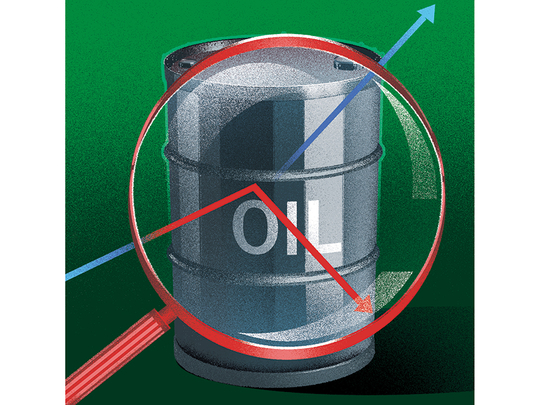
Saudi Crown Prince Mohammad Bin Salman used oil as his initial springboard from relative obscurity. In his first on-the-record interview, in January 2016, he proposed the initial public offering of the oil giant Saudi Aramco. Also that year, he stamped his authority on the energy and industrial sector by appointing Khalid Al Falih as oil minister, with a broad portfolio.
Now, as he pursues a crackdown on princes and other senior figures on corruption charges, oil is once again driving his vision.
Yet, the crackdown carries some risk: Even if the Aramco IPO goes ahead and investors look past the political upheaval, it will raise less than the hoped-for $100 billion and more like $65 billion. A plan to reduce oil dependence in the long-term has created a greater need for petrodollars in the short-term, even as Saudi Arabia becomes more hawkish about oil prices.
MBS is a man in a hurry. The war in Yemen, his plan to build a huge city of the future in the desert, the development of a nuclear power programme, and investments in Uber, Softbank and other tech companies all require cash. At the same time, the crown prince has moved cautiously in cutting subsidies and salaries, reversing reforms when faced with public discontent.
In conjunction with the domestic non-oil recession, this means that savings or new revenues at home will be limited. Until his ambitious modernisation drive, Vision 2030, begins to show tangible progress, domestic private investment will slow, international businesses will be wary of entanglement with the wrong Saudi partner and capital flight will accelerate.
So far, the charges being mentioned for the princes, businessmen and officials who were detained on corruption charges do not involve the oil industry, though former Finance Minister Ebrahim Al Assaf, a Saudi Aramco board member, was taken into custody. Still, the purge raises the country’s apparent political risk, which would dent Aramco’s valuation.
Even without any special risk premiums, the hoped-for valuation of $2 trillion is far off independent estimates.
There have been suggestions that strategic Chinese investors could buy a stake in Aramco without the need for a public listing. But this would put the Chinese in a strong position; they would not overpay, unless compensated behind the scenes, say in discounted oil sales.
Still, a private sale would not achieve any of the IPO’s purported aims of increasing transparency and efficiency. It would be politically riskier — instead of a dispersed group of minority shareholders, Saudi Arabia would have to contend with an energy-hungry superpower owning a significant stake in its core national asset. Further delays or the cancellation of the IPO casts the credibility of the whole national transformation plan into doubt.
The result is that Saudi Arabia, historically a force for oil market moderation, has become a price hawk. Oil prices, which were already rising on strong demand and the slow effect of Opec’s cuts, reached their highest level since mid-2015. The political upheaval may have played a part in the increase, but the market has shrugged off more serious geopolitical upsets recently; the tightening fundamental context is more important.
Opec and its non-Opec partners are likely to extend their March deal to cut production until the end of 2018. The question is what happens then. Iraq targets growth of 5 million barrels per day output by the end of this year, though the conflict over the Kurdish region could delay that goal. Iran’s production expansion has been slow to get off the ground, but could gather pace if it isn’t interrupted by renewed US sanctions.
Sustaining higher oil prices will depend on a continuing robust global economy, strong demand despite higher prices and a moderate response from US shale drillers.
Saudi Arabia has to be careful not to fall again into the trap of giving up market share to keep prices at unsustainable levels. Prince Al Waleed Bin Talal, now under arrest, warned of that danger in a 2013 open letter. From $50, Saudi officials now talk of a price target of $60 per barrel, which will soon become $70 if the price increase continues.
A phased exit from the Opec deal to moderate price gains would be better than another short-lived spike. Higher oil prices now also risk the return of a false confidence that reform can be delayed.
The crackdown has been framed as an attempt to root out corruption, and appears to enjoy broad popularity with ordinary Saudis. Genuinely cleaning up opaque business, monopolies and phoney contracts can save money now, ease the pain of transition and eventually lead to a more diverse and dynamic economy.
For now, oil has to keep priming the pump.












